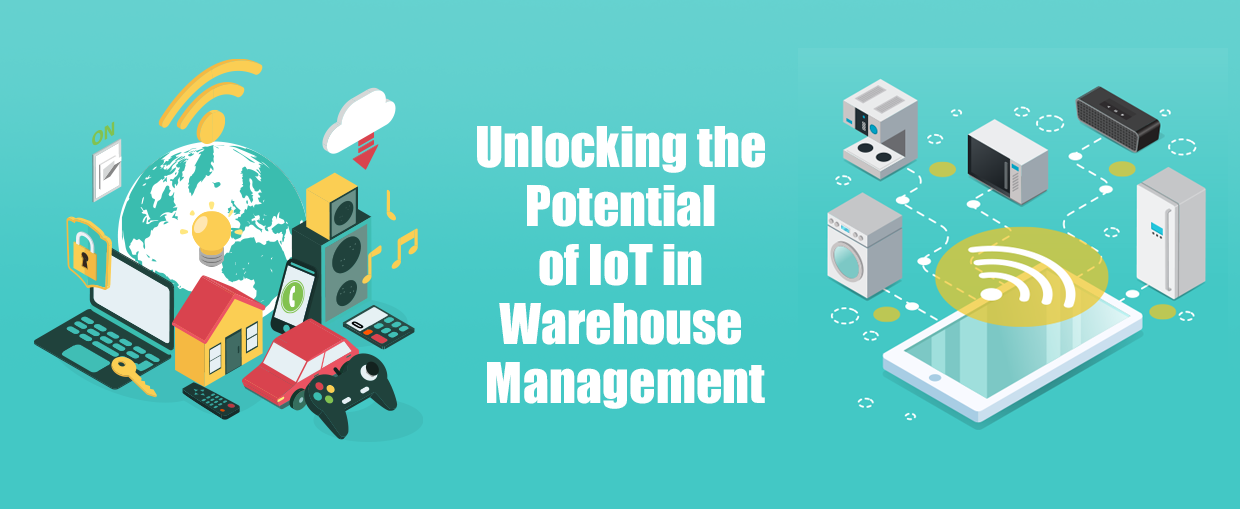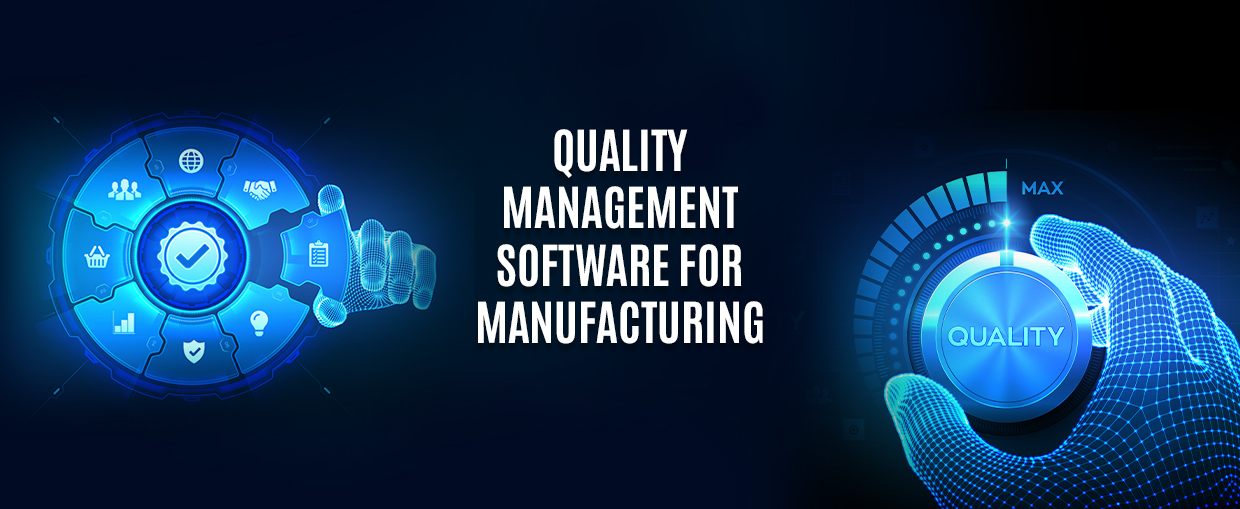IoT is revolutionizing the way we manage warehouses, delivering incredible benefits that impact not just warehouse operations but the entire logistics value chain.
Imagine leveraging IoT in warehouse management to streamline processes with RFID tags, real-time location systems, and smart devices that handle everything from precise location tracking to efficient picking and item monitoring. IoT tackles some of the toughest challenges in warehouse operations, offering smart, innovative solutions. With the rise of big data analytics, 5G networks, and AI, adopting IoT in warehouse management is becoming faster and more impactful than ever.
By combining data with automation, and analytics, an IoT-powered warehouse management system opens the door to exciting possibilities. The benefits are endless—enhancing efficiency, improving precision, and driving profitability. Ready to explore how IoT solutions can help tackle common warehouse challenges and take your business performance to the next level? Let’s dive in!
Understanding the Role of IoT in Warehouse Management
Implementing IoT in warehouse management boosts inventory efficiency, accuracy, and visibility. By enabling remote monitoring, it reduces reliance on manual labor and cuts operational costs. IoT solutions excel at reducing supply chain errors and empower managers to make informed decisions, avoid costly delays, and minimize downtime.
IoT devices enhance warehouse security by safeguarding stocks, equipment, and property. They provide strong protection against theft, making them invaluable for facilities without advanced warehouse management systems. IoT helps monitor key factors like temperature, pressure, and humidity. Real-time alerts help maintain ideal conditions, safeguarding product integrity, extending shelf life, and preventing losses.
IoT not only maintains product quality but also shields against financial losses. It transforms traditional warehouses into smart hubs, boosting efficiency, accuracy, and adaptability. Partnering with a reliable software development company that offers expert IoT services, such as IoT app development, will support your business growth.
Key Benefits of IoT-Based Warehouse Management
IoT-driven warehouse management offers numerous advantages, revolutionizing traditional operations. Below are some of the key benefits:
Improved Inventory Management
IoT-embedded shelves detect low stock and send restocking alerts, ensuring efficient inventory management. IoT also tracks assets accurately, saving time and providing insights into inventory flow. This improves stock replenishment and resource use, transforming your warehouse.
Real-Time Monitoring and Tracking
IoT with Bluetooth connectivity enables real-time monitoring and tracking. Sensors in inventory provide updates on product status, movement, and location. IoT also delivers data insights to optimize processes. Security cameras and sensors monitor storage areas, preventing stockouts and overstock. Real-time visibility saves resources, reduces waste, and prevents spoilage.
Increased Operational Efficiency
The biggest advantage of IoT is reducing human error, which boosts operational efficiency. Automated systems handle repetitive tasks, minimizing mistakes and freeing employees for complex work. Smart devices and sensors streamline workflows and improve productivity. These devices communicate in real-time, while AGVs and telematics reduce manual effort, speeding up logistics and enhancing accuracy.
Reduced Costs and Waste
IoT predictive maintenance detects equipment issues and alerts managers for timely repairs, reducing risks and downtime. It also improves sustainability with smart lighting and climate control, cutting energy consumption.
Enhanced Security and Asset Protection
IoT sensors help warehouse managers track asset movement and monitor environmental conditions. This reduces theft and accidents while maintaining product integrity. The sensors send real-time alerts for quick action.
Order Fulfillment and Customer Satisfaction
Optimized workflows and real-time inventory tracking with sensors and RFID tags speed up order processing and fulfillment. Fewer errors ensure customers get the right products on time, building trust and loyalty.
Implementing IoT in Warehouses: Challenges and Solutions
Although IoT can greatly transform warehouse management, its implementation comes with several challenges. Let’s explore these challenges and how to address them.
Data Integration and Management
The majority of businesses have a variety of data sources. It can be difficult to successfully integrate these databases. The solution to this issue is a complete data management platform. Data for analysis can be standardized and unified by the platform. Make sure that clear data management guidelines are established in order to prevent security threats.
Legacy System Integration
Many warehouses utilize outdated, non-IoT-ready technology, which makes integration more difficult. To enable smooth data exchange between IoT devices and existing systems, bridge the gap with APIs and middleware solutions.
Scalability
Scalable IoT solutions are necessary for warehouses to handle growth. For flexible resource growth without requiring significant on-premises upgrades, choose cloud-based platforms.
Interoperability
Purchasing devices from different vendors can lead to issues, and it can be difficult for these devices to communicate with one another seamlessly. When implementing an IoT system, follow open standards and protocols. To find and fix interoperability problems, do extensive testing prior to deployment.
Change Management
For IoT adoption to be successful, employees must adjust to new processes and technologies. Explain the advantages of IoT and emphasize how its deployment will improve worker safety and productivity. Additionally, offer all employees upskilling or reskilling programs in addition to training on IoT technologies, software, and procedures. Before a full-scale rollout, begin with small-scale pilot projects.
Cost Considerations
Long-term cost savings are possible with IoT, although initial deployment might be costly. It may also be expensive to maintain sensor networks, equipment, and infrastructure over time. Being impact-ready is the greatest approach to this problem. To identify possible ROI, perform a comprehensive cost-benefit analysis prior to deployment. Examine different rollouts or cloud-based alternatives to efficiently control expenses.
Data Security
Protect IoT-generated data, especially sensitive inventory and operations details. Regularly assess risks and train employees on cybersecurity best practices. Use strong security measures, including encryption and regular software updates.
IoT-Powered Devices Used for Warehouse Management
Let’s explore the most popular smart warehouse solutions currently in use.
IoT sensors track real-time factors like temperature, humidity, light exposure, and air quality in the warehouse. This ensures ideal storage conditions to maintain product quality and safety. RFID tags, available in Active, Passive, and Semi-Passive forms, are attached to inventory, pallets, or containers. RFID readers, placed at key locations, automatically track goods as they move through the warehouse. This system provides real-time visibility, improving asset management and preventing loss.
Beacons are wireless devices that utilize BLE technology for precise asset tracking, and identifying the location of items or warehouse vehicles. They also monitor environmental factors such as temperature and humidity to protect sensitive inventory. AI cameras with computer vision can track warehouse operations, detect anomalies or safety risks, and alert managers to accidents. They also automate inventory checks and quality control tasks.
Smart shelves use IoT sensors to monitor stock levels, trigger automatic reordering, and eliminate manual counting, ensuring inventory is always at optimal levels. Autonomous Mobile Robots (AMRs) use sensors and AI to plan and adjust routes in real-time. Designed to collaborate with human workers, they transport materials around the warehouse, operate 24/7, optimize routes, restock inventory, integrate with Warehouse Management Systems (WMS), and help address workforce shortages.
Drones can scan inventory, track locations, and provide real-time monitoring. They are especially useful for accessing difficult areas or during night shifts to avoid disrupting operations. Edge computing allows real-time data processing and analysis directly in the warehouse, ensuring rapid responses. Cloud integration supports quick, accurate data analysis and decision-making for smart warehouses.
Smart HVAC systems use AI and predictive analytics to automatically maintain optimal environmental conditions, reducing utility costs and energy consumption. They offer analytics and real-time alerts, resulting in cost savings and enhanced sustainability.
Implement an IoT-based Warehouse Management System With Us!
Modern technologies are transforming various industries. Warehouse management, once filled with time-consuming manual tasks, is now largely automated through IoT systems. These solutions have become essential in today’s business landscape. For companies looking to drive growth and optimize operating costs through warehouse management automation, expert assistance is key.
Choose to hire dedicated software developers with expertise in developing and implementing IoT software solutions. Additionally, an expert QA consulting services provider can help guarantee the quality and reliability of these IoT systems. Get in touch with us to discover how we can help you achieve your goals.









